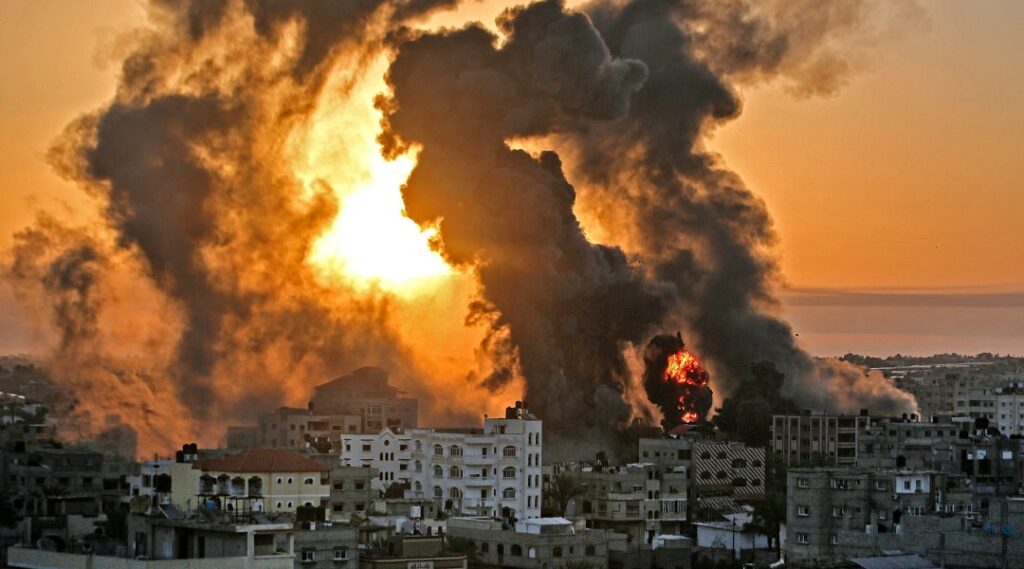The ongoing conflict between Israel and Hamas is a deeply rooted and complex issue that has spanned decades, characterized by intermittent clashes, wars, and ceasefires. This article delves into the intricate circumstances surrounding the Israel-Hamas conflict, examining its historical background, underlying causes, key events, and the challenges in achieving a lasting peace.
Historical Background
The conflict between Israel and Hamas is deeply rooted in the historical context of the Israeli-Palestinian conflict. The establishment of the state of Israel in 1948 led to a massive displacement of Palestinians, causing resentment and anger among the Palestinian population. Over the years, multiple wars and confrontations have taken place, further exacerbating tensions in the region.
Origins of Hamas
Hamas, short for “Harakat al-Muqawama al-Islamiya” or the Islamic Resistance Movement, was founded in 1987 during the First Intifada, a Palestinian uprising against Israeli occupation. Originally, Hamas was formed as a social and religious organization that also provided social services to Palestinians in the Gaza Strip and West Bank.
However, over time, Hamas evolved into a military and political entity that actively opposed the Israeli presence in the region. Its rise to power has led to a complex dynamic in the Israeli-Palestinian conflict, with Israel viewing Hamas as a terrorist organization, while some Palestinians see it as a legitimate resistance movement.

Key Issues
-
Territory and Borders: One of the central issues in the conflict is the dispute over territory and borders. Israel’s occupation of the West Bank and Gaza Strip and the construction of settlements have been sources of contention. The question of where the borders of Israel and a future Palestinian state should be drawn remains a significant stumbling block.
-
Refugees and Right of Return: The status of Palestinian refugees and their right to return to their ancestral homes is another contentious issue. Palestinians who were displaced during the 1948 Arab-Israeli war and their descendants seek the right to return, which is a deeply emotional and complex matter.
-
Jerusalem: The status of Jerusalem is a particularly sensitive issue. Both Israelis and Palestinians claim Jerusalem as their capital, and its future has been a source of conflict. The city holds great religious significance for Jews, Christians, and Muslims.
-
Security Concerns: Israel’s security concerns play a significant role in its approach to the conflict. The threat of rocket attacks from Hamas and other militant groups in Gaza has led Israel to impose restrictions and maintain a blockade on the territory.
Key Events
Several key events have marked the Israel-Hamas conflict:
-
First and Second Intifadas: The First Intifada (1987-1993) and the Second Intifada (2000-2005) were significant uprisings against Israeli occupation. These events had a profound impact on the dynamics of the conflict, fueling anger and radicalization among Palestinians.
-
Oslo Accords: The Oslo Accords, signed in the 1990s, aimed to establish a framework for future negotiations and a two-state solution. However, the failure to implement these agreements effectively contributed to the ongoing conflict.
-
Operation Cast Lead (2008-2009) and Protective Edge (2014): These were two major Israeli military offensives in Gaza aimed at suppressing rocket attacks by Hamas. The events resulted in significant casualties and destruction, drawing international criticism.
-
Gaza Protests and the Great March of Return: In 2018, protests erupted in Gaza as Palestinians called for their right of return and the lifting of the blockade. These protests were met with force, leading to numerous casualties.
Challenges to Peace
Achieving a lasting peace between Israel and Hamas presents several challenges:
-
Leadership and Divisions: Both Israeli and Palestinian leadership have faced internal divisions, making it difficult to maintain a unified approach to negotiations.
-
Radicalization and Extremism: Radical elements on both sides have undermined efforts at reconciliation, making it challenging to find common ground.
-
International Diplomacy: The involvement of international actors, including the United States, the United Nations, and regional powers, adds complexity to the situation. Differing approaches and priorities among these stakeholders can hinder progress.
-
Humanitarian Concerns: The humanitarian situation in Gaza, exacerbated by the blockade and military conflicts, has dire implications for the civilian population and further complicates the path to peace.
The Israel-Hamas conflict is a deeply entrenched and multifaceted issue, rooted in historical grievances, territorial disputes, and deeply held religious and cultural values. Finding a resolution that addresses the concerns of both Israelis and Palestinians remains an immense challenge. A lasting peace will require visionary leadership, international cooperation, and a willingness to address the core issues at the heart of the conflict. Ultimately, it is essential to remember that peace in the region is not only in the interest of Israelis and Palestinians but also crucial for global stability and security.


